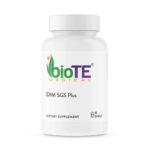Circumcision is a surgical procedure involving the removal of the foreskin that covers the head of the penis. It is a cultural and religious practice performed in various parts of the world for centuries. Aside from the cultural and religious significance, circumcision has also been associated with numerous health benefits, including improved hygiene. In this article, we will delve into the relationship between circumcision and hygiene, debunk some common myths, and explore the potential advantages of this procedure.
The Basics of Circumcision
Circumcision is typically performed during infancy or early childhood, although it can also be done during adulthood for various personal or medical reasons. The procedure is conducted by a trained healthcare professional under sterile conditions to ensure safety and minimize potential complications. It involves removing the foreskin, leaving the glans of the penis exposed. One common misconception is that circumcision is unnecessary for maintaining good hygiene. While it is true that uncircumcised individuals can maintain proper hygiene through regular cleaning, circumcision offers additional advantages in this regard. The presence of the foreskin can create a moist and warm environment that promotes bacterial growth, potentially leading to infections such as balanitis (inflammation of the glans) or urinary tract infections (UTIs). By removing the foreskin, circumcision reduces the risk of these infections and contributes to overall genital health.
Circumcision Hygiene Benefits
While there are various cultural, religious, and medical reasons for circumcision, discussing the hygiene benefits is one aspect. It’s important to note that medical opinions may evolve. Here are some potential hygiene benefits associated with circumcision:
- Easier genital hygiene: The removal of the foreskin simplifies the process of cleaning the penis. With circumcision, there is no need to retract the foreskin to clean the area beneath it, reducing the risk of debris accumulation and the potential for bacterial growth.
- Reduced risk of smegma buildup: Smegma is a substance that can accumulate under the foreskin, consisting of dead skin cells, oils, and other bodily secretions. In uncircumcised individuals, if proper hygiene practices are not followed, smegma can build up and lead to an unpleasant odor, irritation, and potential infection. Circumcision eliminates the foreskin, reducing the likelihood of smegma accumulation.
- Lower risk of urinary tract infections (UTIs): Studies have indicated that uncircumcised males may have a slightly higher risk of urinary tract infections compared to circumcised males, particularly in infancy. The removal of the foreskin may decrease the likelihood of bacteria entering the urinary opening and causing infections.
- Potential reduction in risk of sexually transmitted infections (STIs): Some research suggests that circumcision may provide a slight protective effect against certain sexually transmitted infections, including HIV. It is believed that the removal of the foreskin decreases the likelihood of microtears and makes it more challenging for pathogens to establish an infection.
It’s important to note that the hygiene benefits of circumcision should be weighed against potential risks and individual preferences. Ultimately, the decision to circumcise should be made based on a comprehensive understanding of the available medical information, cultural or religious beliefs, and individual choice. It is recommended to consult with healthcare professionals to discuss the potential advantages and disadvantages of circumcision in each specific case.
Prevent infection and Care Tips after circumcision
Proper care after circumcision is essential to ensure proper healing and reduce the risk of complications. Here are some general guidelines for circumcision care:
- Keep the area clean: Gently clean the area around the circumcision site with warm water and mild soap. Avoid using any harsh or scented soaps, as they can irritate the sensitive skin.
- Use antibiotic ointment: Apply a thin layer of antibiotic ointment or petroleum jelly to the circumcision site after each cleaning. This helps keep the area moist and prevents infection. Follow any specific instructions provided by your healthcare provider.
- Avoid submerging the wound: Until the wound has healed, avoid activities that involve soaking in water, such as swimming in pools, hot tubs, or bathtubs. Stick to showers instead.
- Pat dry gently: After washing, pat the circumcision site dry with a clean, soft towel. Avoid rubbing the area, as it can cause irritation or disrupt the healing process.
- Apply prescribed ointment or cream: If your doctor has prescribed an ointment or cream, apply it as instructed. This may help prevent infection and promote healing.
- Change dressings: If your healthcare provider has placed a dressing or gauze on the circumcision site, follow their instructions regarding when and how to change it. Keep the area covered until your healthcare provider advises otherwise.
- Avoid strenuous activities: Limit physical activities, especially those that may put a strain on the circumcision site, for a few days after the procedure. This helps promote healing and reduces the risk of bleeding or injury to the area.
- Wear loose-fitting clothing: Choose loose and comfortable clothing that does not rub against or put pressure on the circumcision site. Tight underwear or pants can irritate and slow down the healing process.
- Watch for signs of infection: Keep an eye out for any signs of infection, such as increasing redness, swelling, pain, or discharge from the site. If you notice any concerning symptoms, contact your healthcare provider for further guidance.
- Avoid sexual activity: Refrain from sexual activity until the circumcision site has fully healed and any discomfort or soreness has resolved. This typically takes a few weeks.
- Follow post-operative instructions: Carefully adhere to any specific post-operative instructions provided by your healthcare provider. These instructions may include guidance on wound care, bathing, and activity restrictions.
It’s important to note that these are general guidelines, and it’s always best to follow the specific instructions provided by your healthcare provider. If you have any concerns or questions about circumcision care, don’t hesitate to reach out to your healthcare provider for guidance.
Conclusion:
While proper hygiene can be maintained with or without circumcision, the removal of the foreskin simplifies genital hygiene and reduces the risk of certain infections. However, it is crucial to emphasize that the decision to undergo circumcision should be a personal one, guided by informed discussions with healthcare professionals and consideration of cultural and religious factors. Regardless of the decision made, everyone needs to prioritize regular genital hygiene practices to maintain good health and reduce the risk of infections.
-
Custom Fields
-
Select an available time
-
Your Information
-
Confirmation




